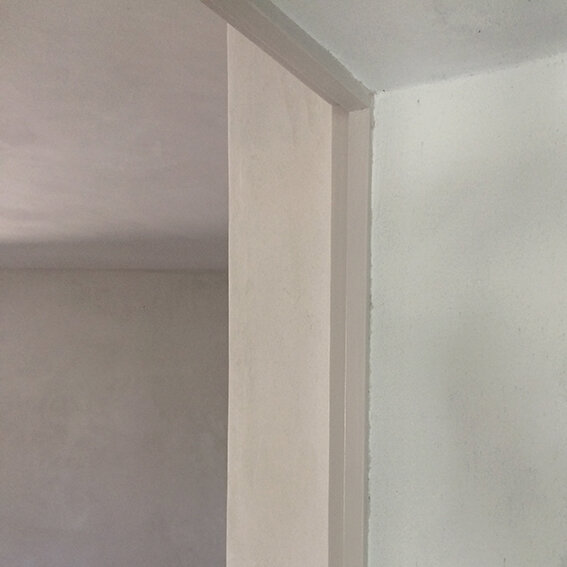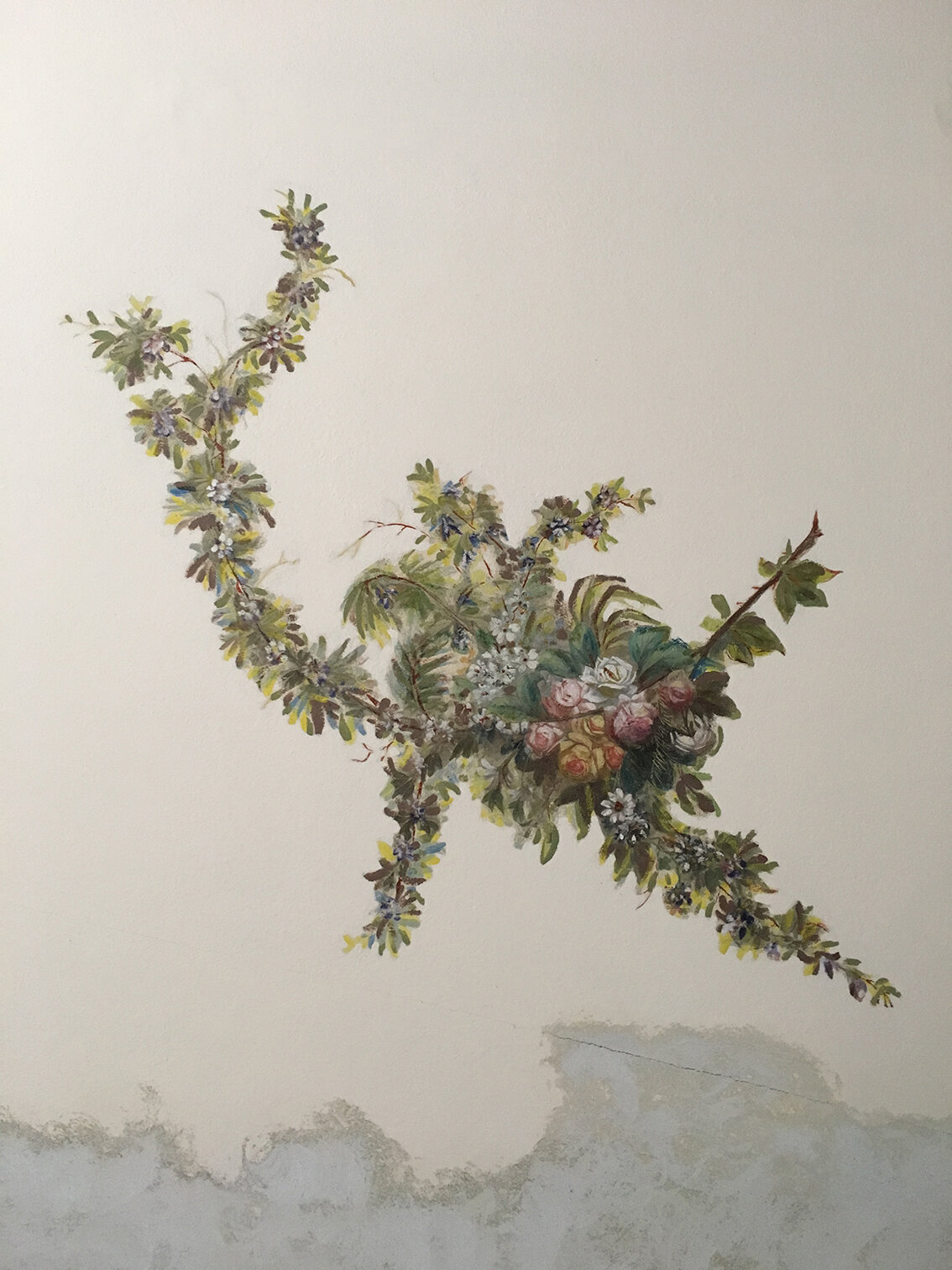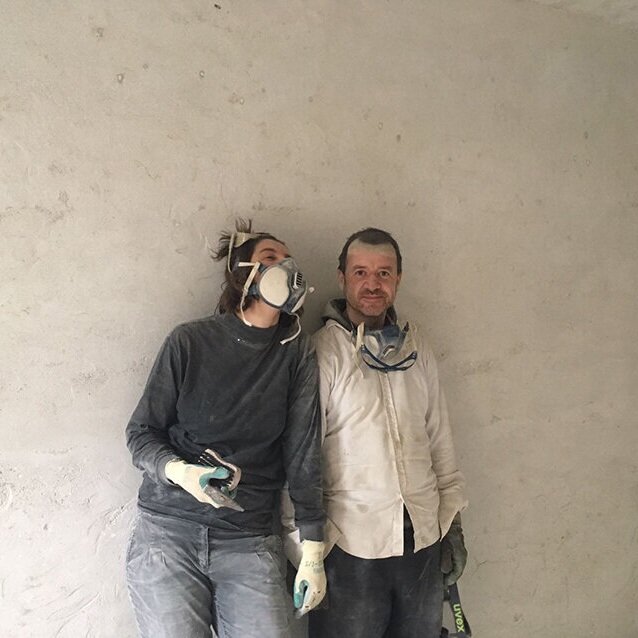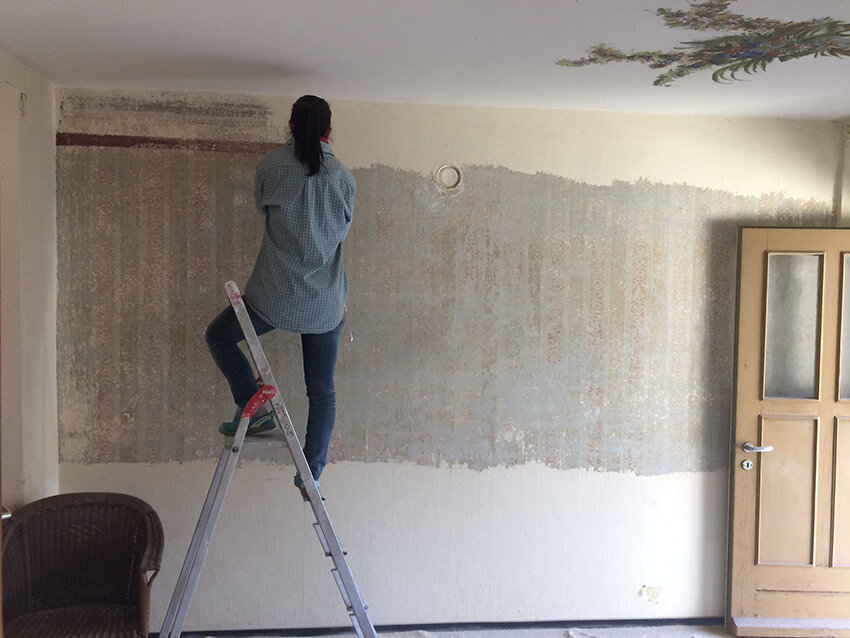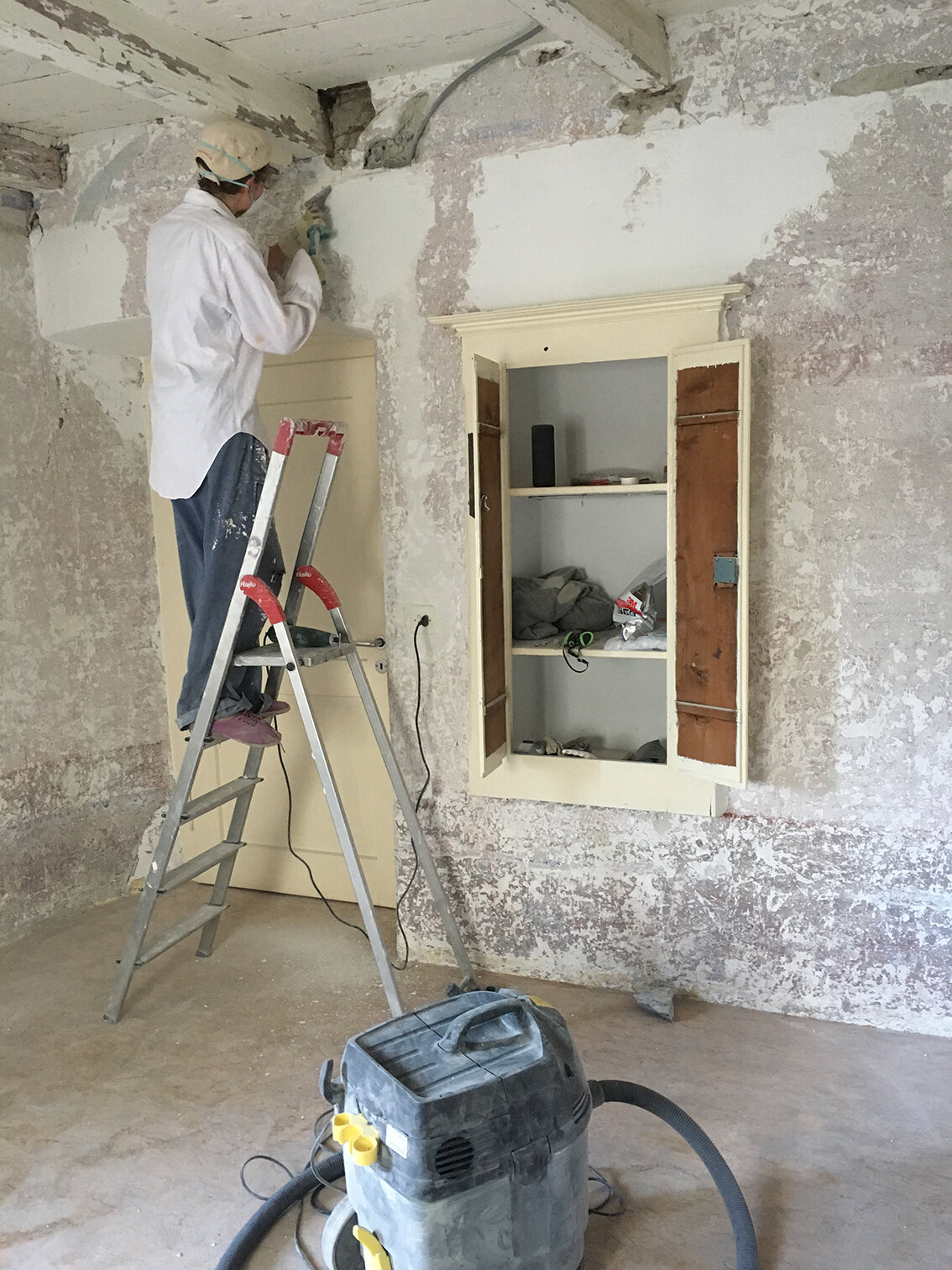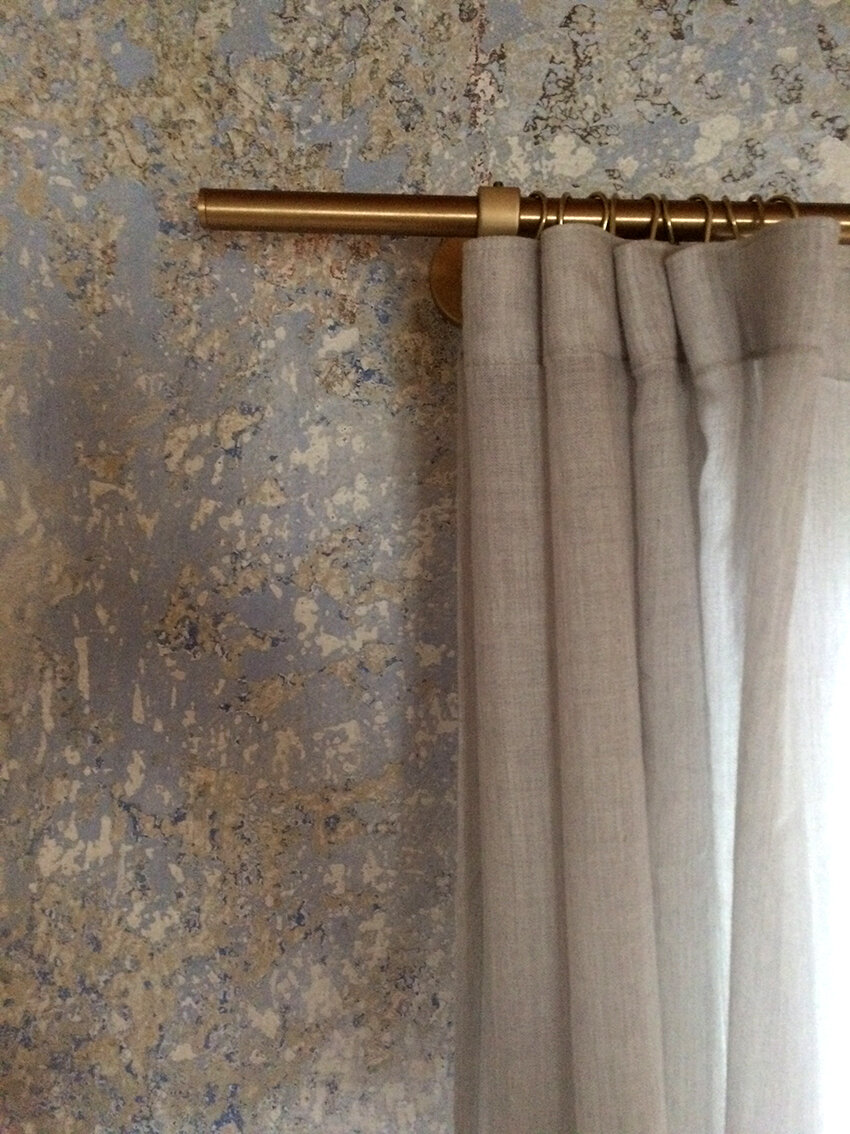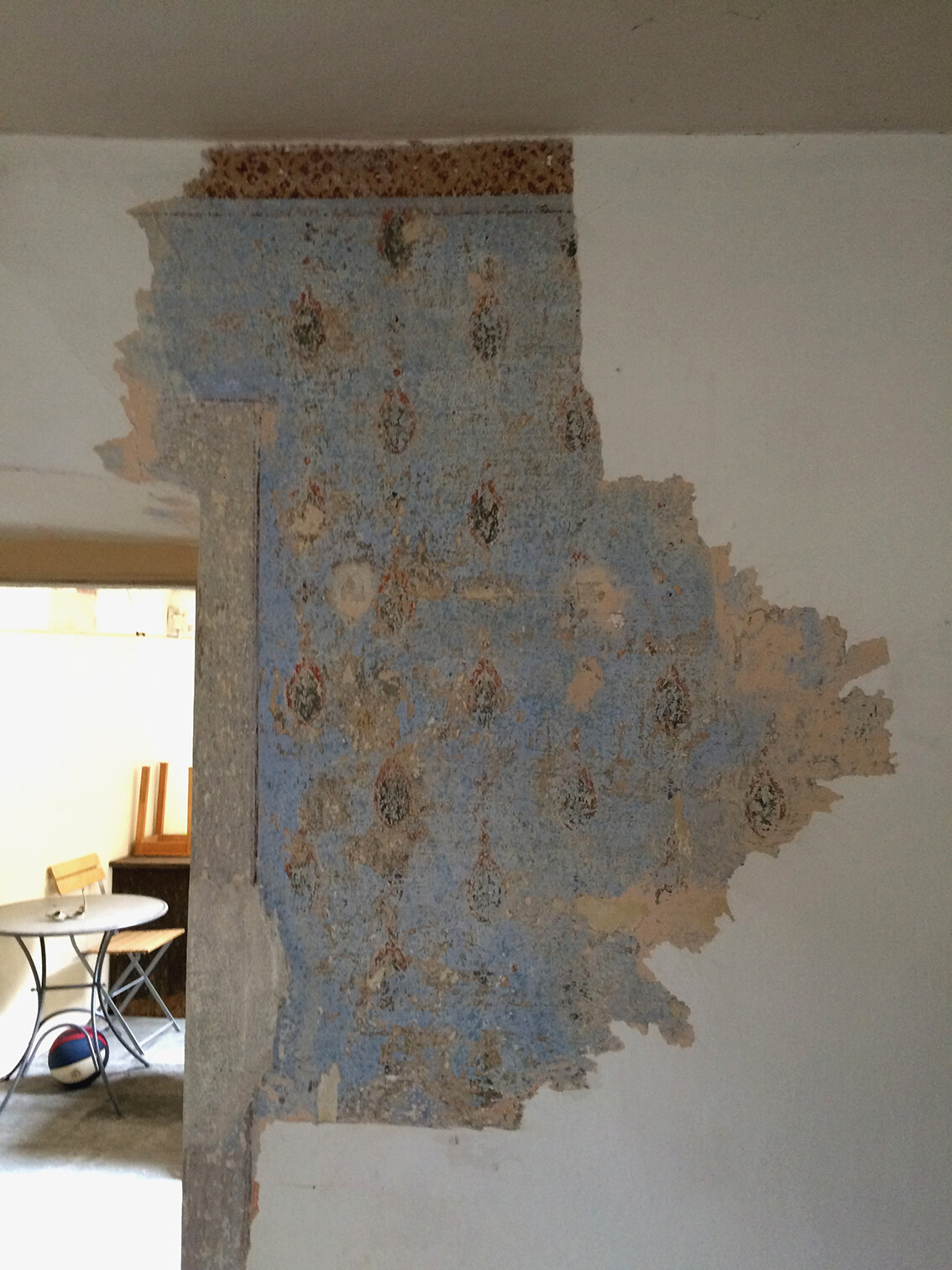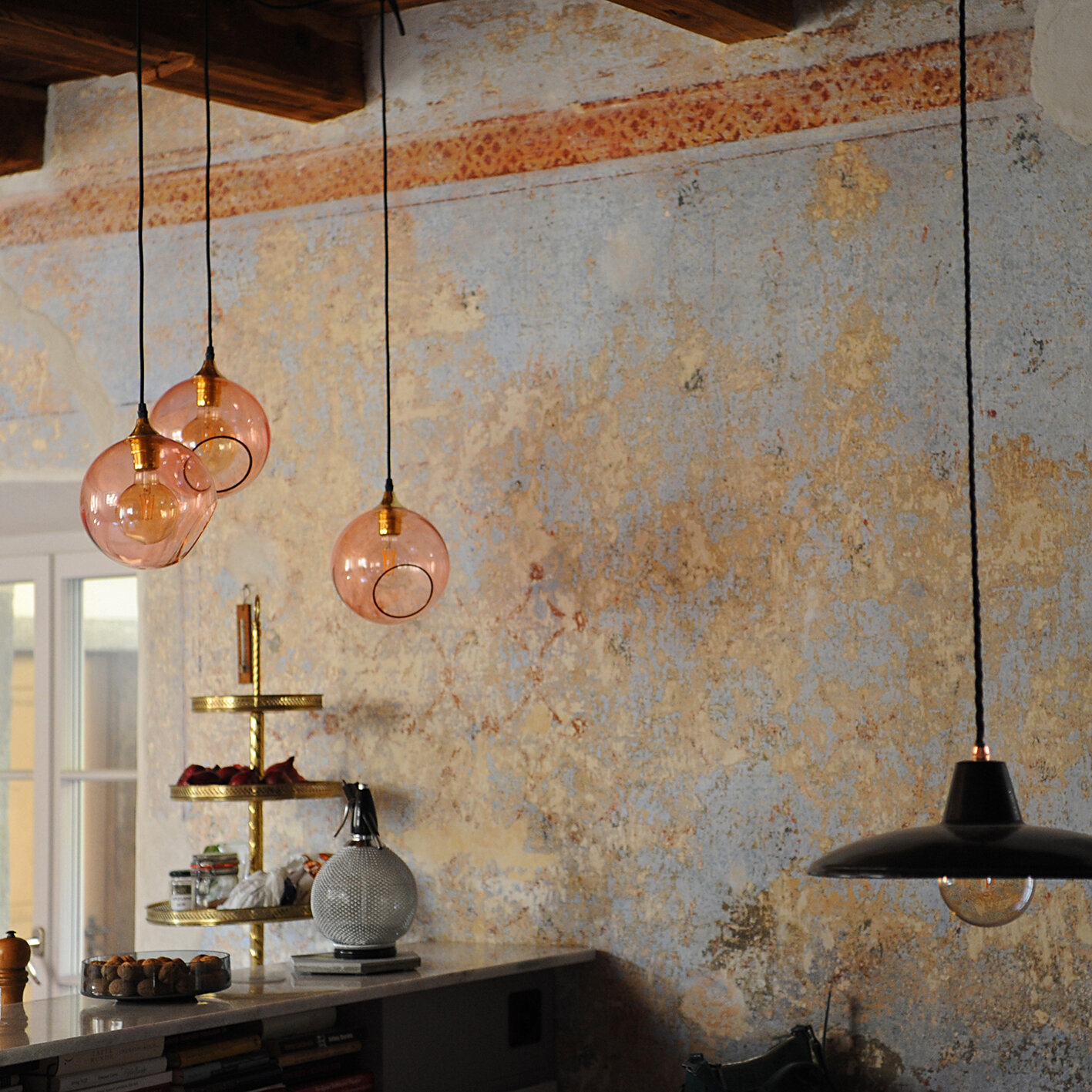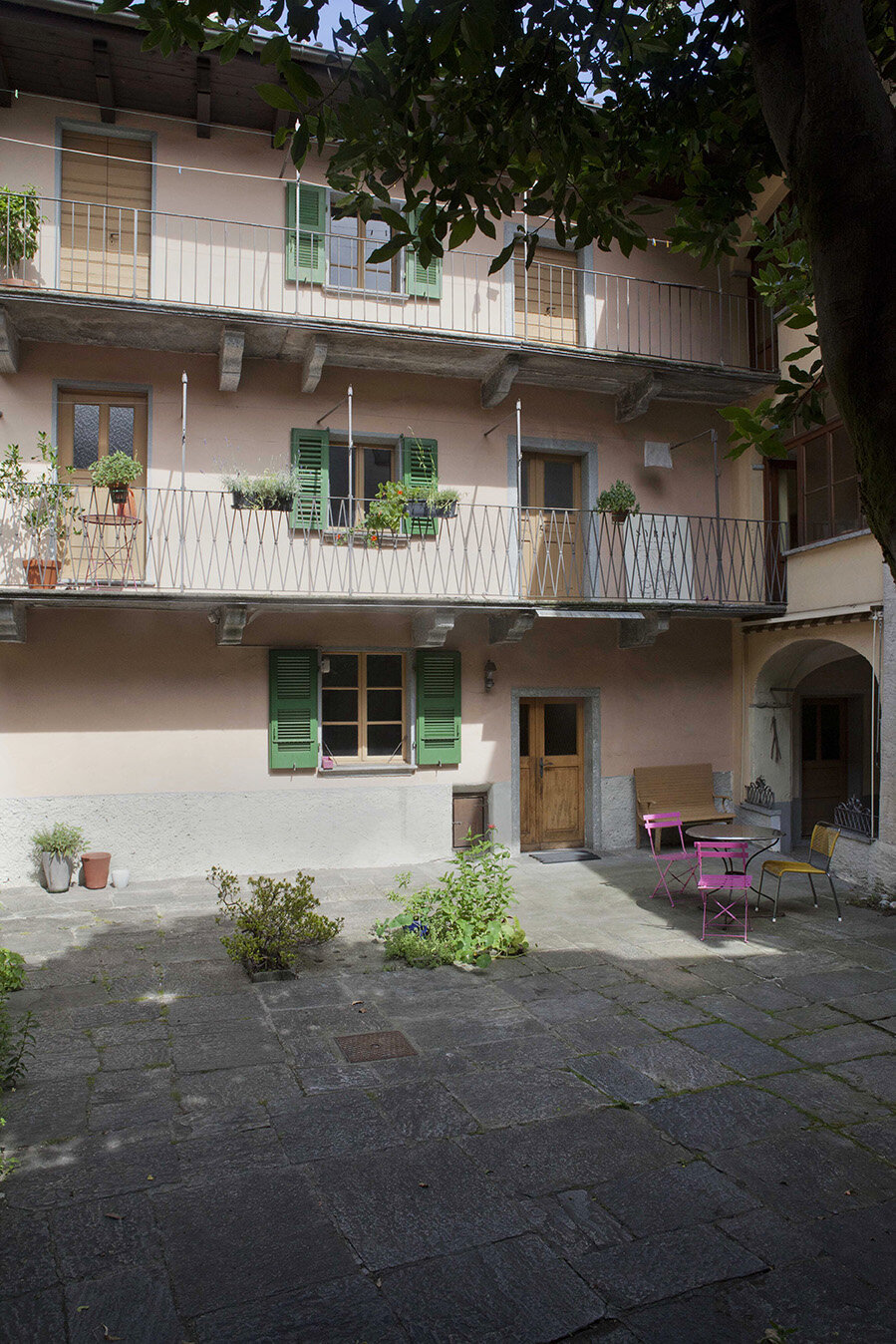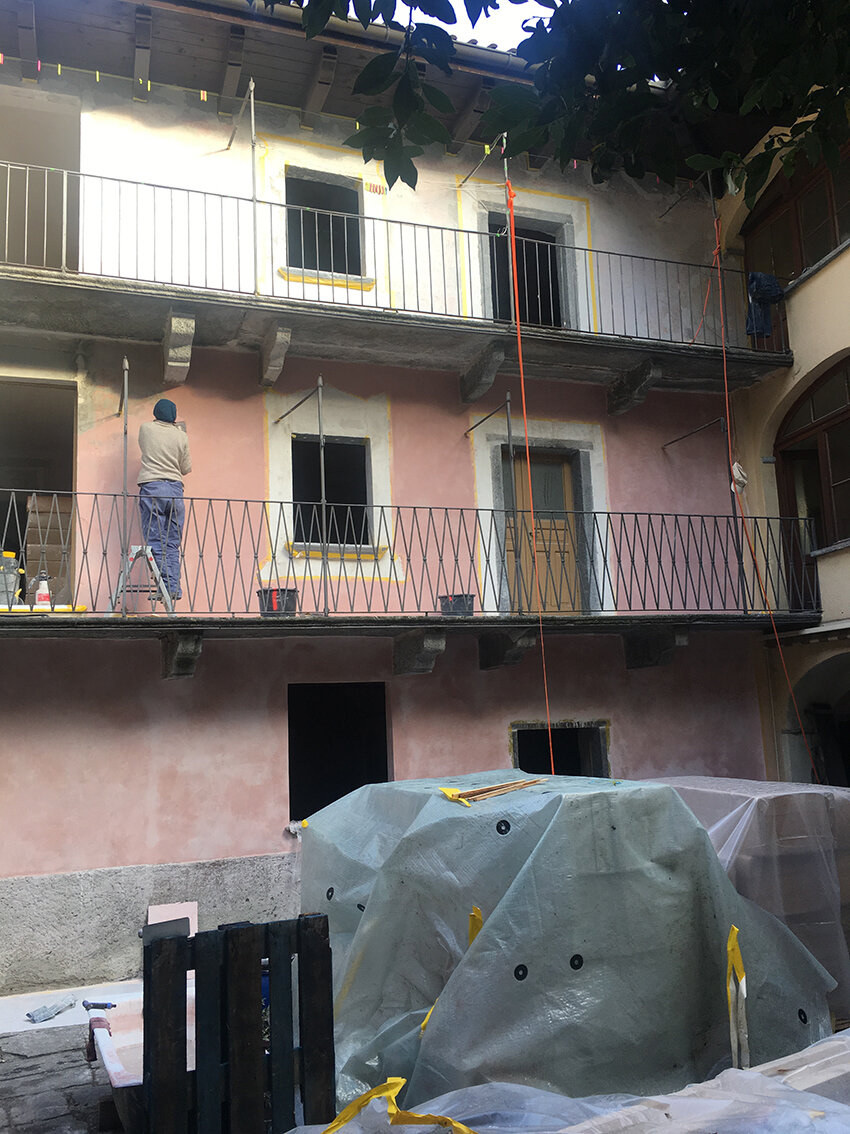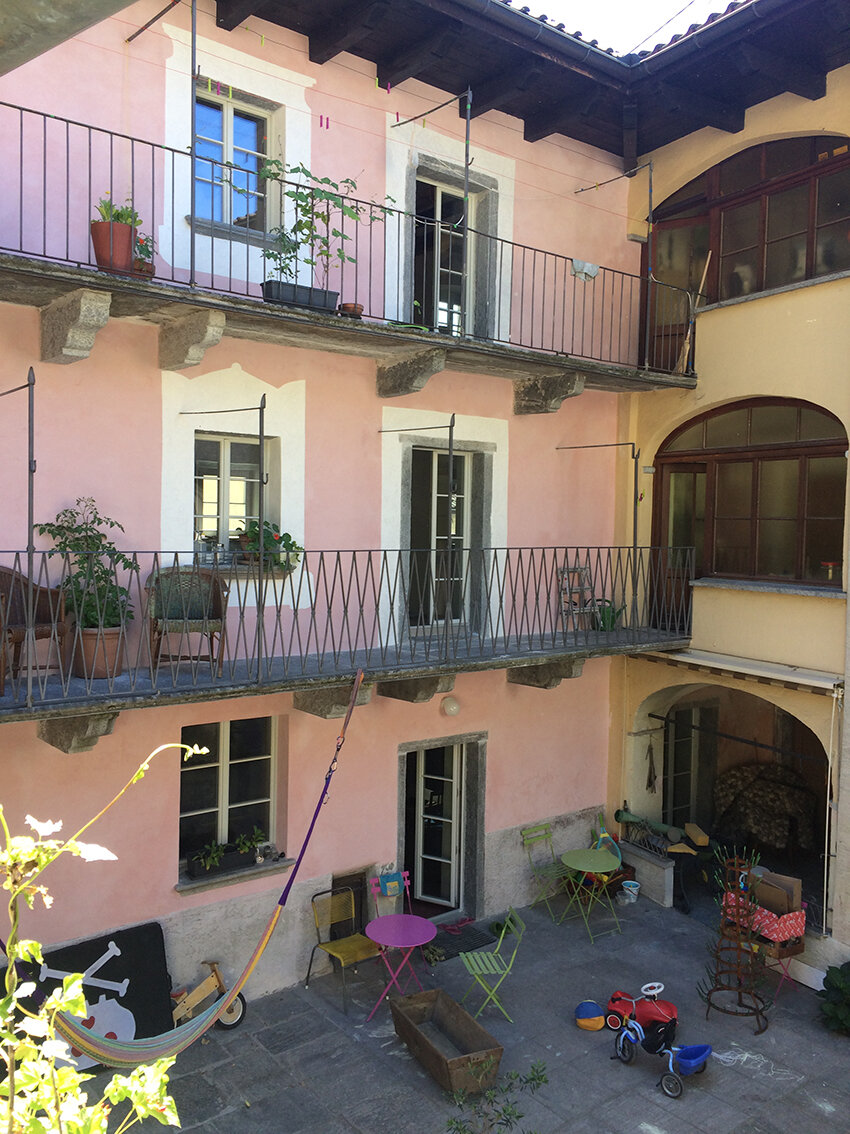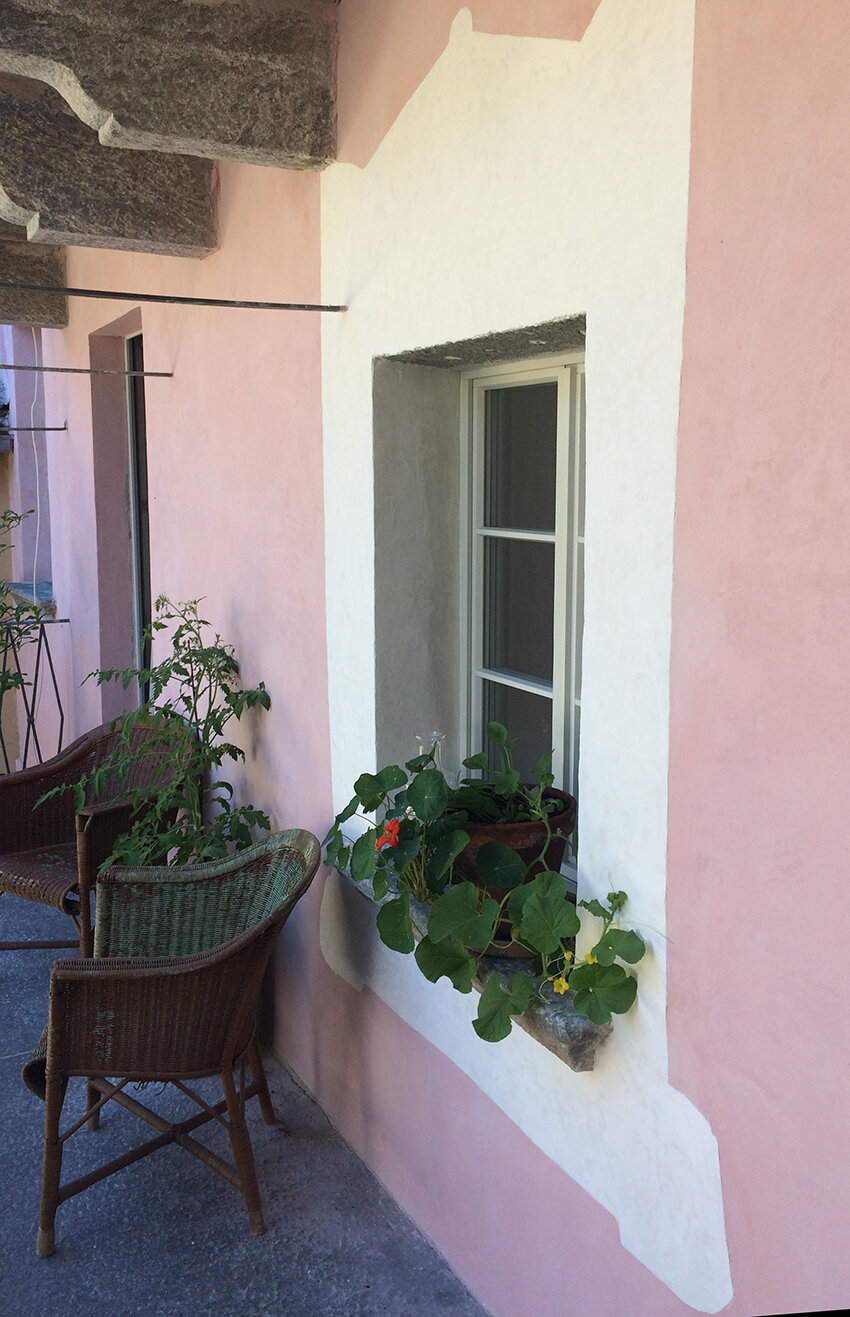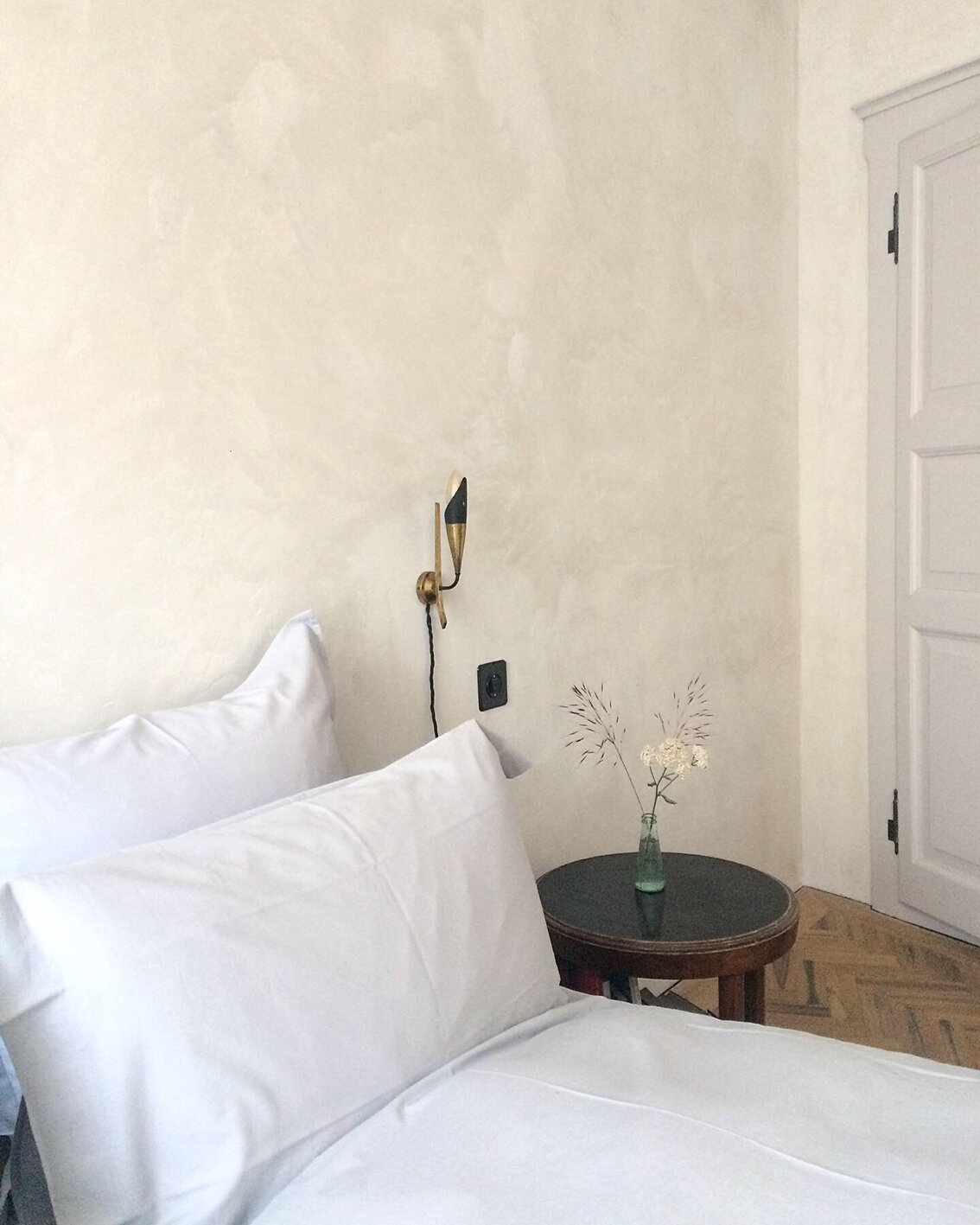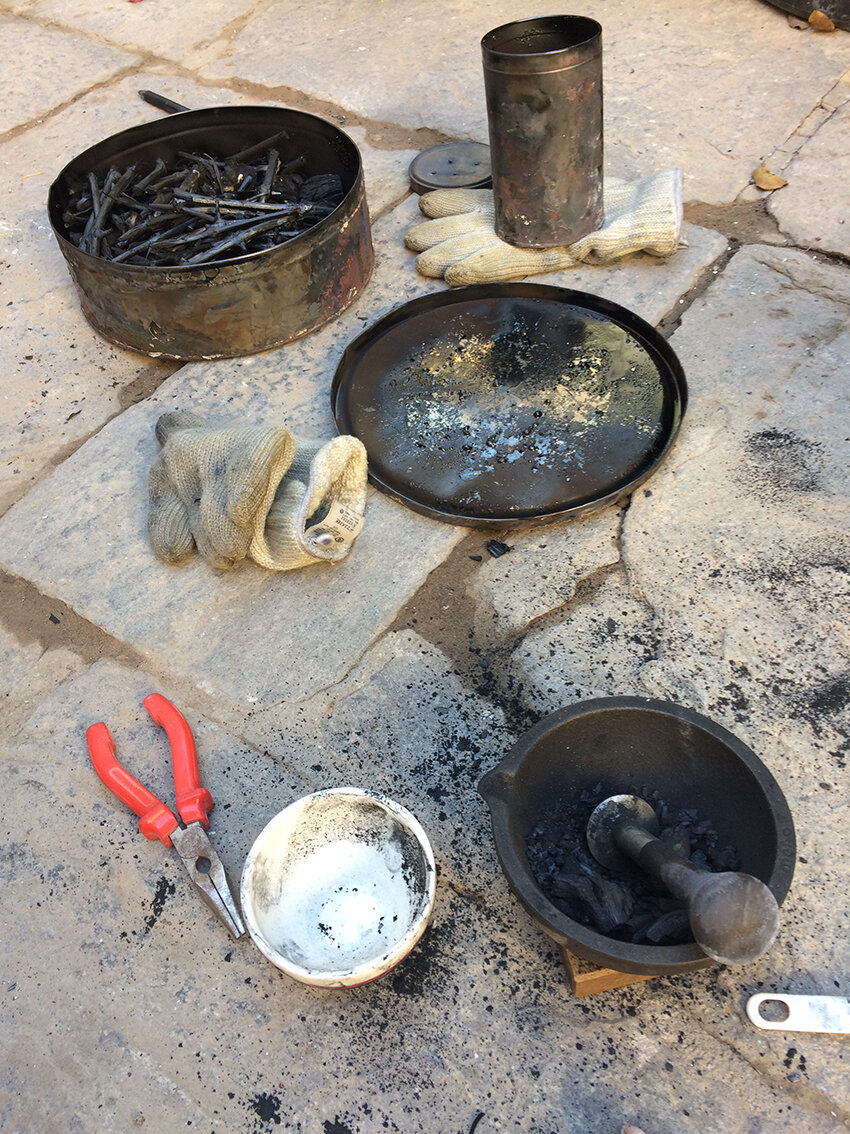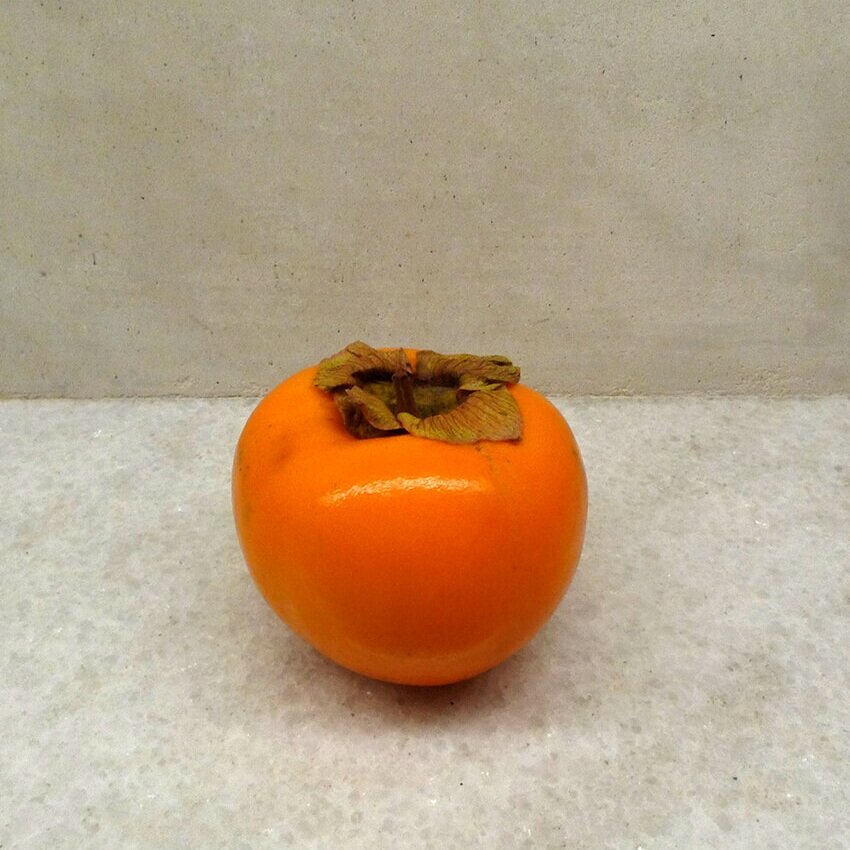Walls have ears …
… and the walls of the Cortiletto have heard a lot of things. The granite stone walls, which are about 60 cm thick and up to 300 years old, were originally plastered with lime and then repeatedly painted over. These layers of paint speak of decorative fashions, moisture and soot problems, but also of the development of paint products. When we started scratching the surface of the walls, we discovered the original coats of paint made of lime, which were sometimes more and sometimes less decorated. For countless hours and with many helping hands, we gently removed the veneers, so that today the liveliness of the old lime coatings can be seen again.
The remaining walls were newly plastered with a lime mortar. We were able to benefit from the enormous knowledge of Willy Jossen, who also carried out all the plastering work inside. The finest of the "kitchen sand", obtained by sieving the excavated material from the kitchen floor, was used for tinting. Fine mica and the colours of the Melezza sand give the walls the site-specific colour tone. On the upper floor, self-made pigment from a charcoal made from our neighbours vine-wood was used to set the shade. The vine pigment is a classic blue-grey tone of fresco painting. In the kitchen the walls were drenched black with soot from the old open fire. A first barrier layer of lime-putty mixed with cow dung ensures that this soot can no longer penetrate through to the surface. The lime walls ensure a very healthy room climate. They regulate humidity and have an antibacterial effect.
The façade has been painted over with a plastic-mixed paint. During sanding, white borders were revealed around the windows and doors, which are typical for the area. What a gift! The borders were first repainted with lime plaster containing white marble powder, then, in a second operation, filled with pure lime marble to achieve their characteristic shine.

